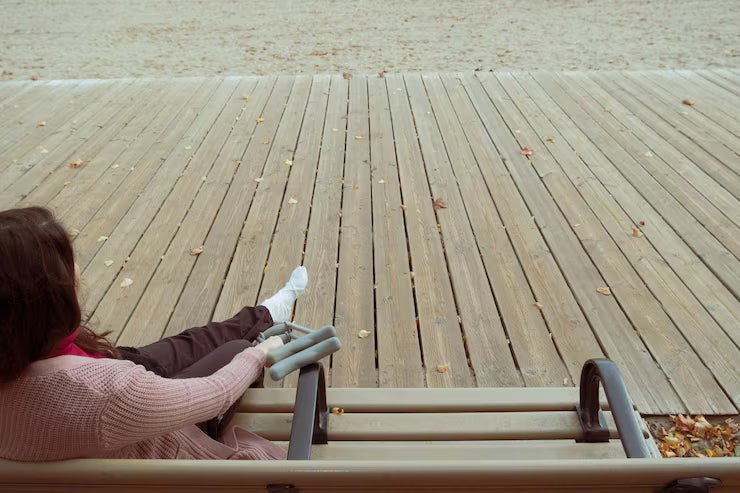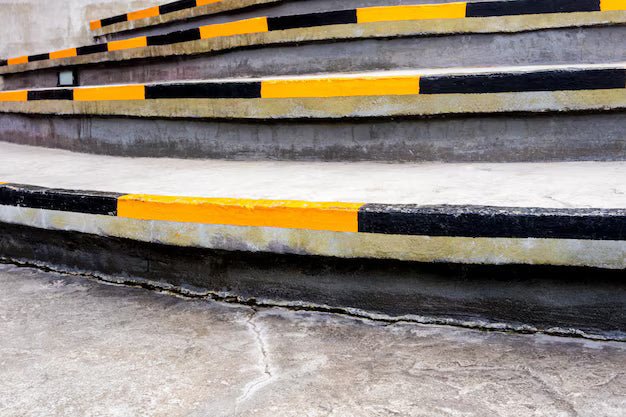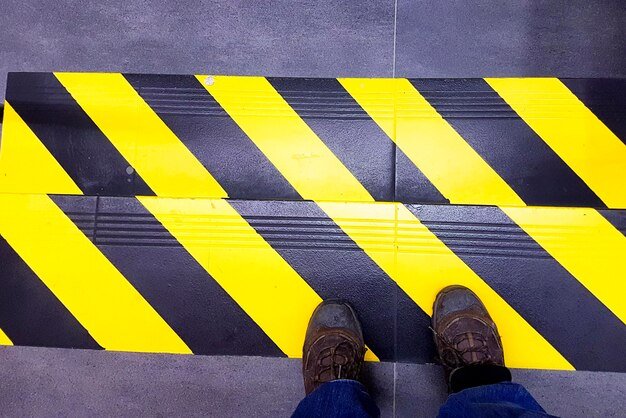As autumn settles in, it’s easy to notice your deck changing underfoot. Surfaces that felt solid and steady in July can start to feel a bit slick by late October. Between the rising damp, blanket of wet leaves, and cooler temperatures, these changes creep in fast. The colder air doesn’t just chill the garden, it clings to timber and stone, holding in moisture much longer than before.
We’ve seen how quickly safety can shift from summer to autumn. Slipping becomes less of a surprise and more of a worry, especially in shaded areas or where puddles collect. There are some pretty simple ways to add grip again, and decking strips are one of the more efficient fixes. But before making changes, it helps to understand what’s really making surfaces feel unstable this time of year.
Accumulated Leaves and Organic Debris
As the trees drop their leaves, decks often become collection points. It isn’t just the colour that changes. A patch of yellow and brown may look harmless at first, but over time it starts to break down and stick. Rain and dew soak those leaves, and before long they smother the surface underneath.
• Fallen leaves hold water, keeping the wood damp long after the rain has passed
• Dirt and twigs gather with them, forming small clumps of debris in corners or along edges
• Uneven sections of decking trap these bits more easily, especially near step edges or where railings meet the boards
If debris gathers where people regularly walk or turn, like when stepping out with a bin or carrying something to the shed, the chance of slipping grows. Shady spots under staircases or near fences are often first to stay damp and last to dry. Without regular sweeping, these areas turn slick quickly and quietly.
Over the course of the season, all those leaves and organic bits can build up into a thick layer, and once it gets stepped on, it compresses into a slimy mat. This mat forms a barrier, holding moisture against the boards, and providing a perfect base for moss and algae to thrive. Without a regular habit of brushing the deck, leaves and twigs can go unnoticed in the corners or underneath outdoor furniture, often becoming a hidden slip hazard just as you’re ready to walk outside.
Algae and Moss Build-Up from Moisture
The more time surfaces stay damp, the more chances algae and moss have to grow. These start small (often invisible from a distance) but once your footing changes, it’s clear something’s off. Decking in shaded or poorly ventilated areas is especially prone to growth during autumn when the air is cooler and drying time stretches out.
• Algae forms a thin, green film that can turn wooden or stone decking slippery
• Moss collects in gaps or along edges where water pools
• Smooth footing quickly disappears where these grow unchecked
Steps, ramps and low-lying areas are usually the first to show slimy patches. Morning condensation, overnight frost and regular drizzle create the perfect line-up for these quiet hazards. If you can see green streaks in the grain or feel a slick patch underfoot, that's often algae or moss making itself at home.
Over time, what starts as a faint green trace grows thicker as the cool, damp days persist. Brushing alone may not remove it since the surface underneath becomes softened by the continuous wetness. That’s when moss can take hold, putting down roots in little cracks and seams. Even if you think your deck is clean, if it’s been shaded and wet for a few days, you might find patches suddenly appear when you least expect them.
Worn or Weathered Decking Surfaces
As decking boards age, they naturally lose some of their original texture. Boards that started off with grip gradually start to feel smoother, especially if they’ve been walked over for years. Autumn reveals this wear clearly. Once washing, sweeping and drying take longer, the original finish no longer holds up the same way.
• Repeated wet and dry cycles cause wood to soften at the surface
• Exposure to sunlight and foot traffic speeds up surface smoothing
• Cracks or splinters appear, and with them, a bigger risk of slips or missteps
A worn deck might look solid from a distance, but feel completely different underfoot. When cleaning stops improving the surface texture, and everyday use feels unsure, that’s a sign it’s losing its natural hold. These conditions often pair with algae and debris, making the surface doubly risky.
As boards age, their grooved patterns can wear flat, making each step less predictable. Sometimes you’ll notice darker spots or areas where water doesn't bead up but instead sits there, soaking in. Eventually, the soft wood fibres let in more water, causing the boards to stay damp for longer. If your shoes or boots drag slightly over the surface, or you find yourself taking smaller steps, chances are it’s time to give the deck some attention. Worn boards are more likely to become hosting grounds for moss, joining forces with the autumn elements to make the surface extra slick.
Poor Drainage Around the Deck
Without somewhere for water to go, decks stay wet far longer than they should. Good drainage makes a big difference. Poor drainage, on the other hand, speeds up just about every problem you’ll run into during autumn.
• Clogged drains lead to puddles that saturate wooden boards or pool on stone
• Leaf build-up blocks runoff points, directing water where it shouldn’t go
• Low-ground areas or sunken joints hold damp longer than raised areas, especially with compacted soil nearby
Where water sticks around, moss, algae and rot often follow. It can be hard to tell from above if drainage is blocked. But if puddles form often in the same spot, or you see leaf piles stuck near grates or corners, there’s likely a problem underneath contributing to the surface slickness.
A deck that seems to stay wet long after the rain has stopped is often telling you something’s wrong beneath the boards. If water flows towards your house or into a corner, it has nowhere to drain, soaking into the wood and the ground below. Over time, this pooled water can even loosen the fixings or lead to structural trouble. It's worth checking where the ground slopes and whether gutters and downspouts are pointed away from your outdoor spaces. Addressing drainage early saves time and helps prevent the cycle of damp, moss, and wear from taking hold in the first place.
Way to Make Paths Safer Before Winter
Late autumn is a good time to take action. Once the clocks go back and sunlight shortens, safety slips even more quietly into the background. Looking over the highest-use parts of your garden will help decide where grip matters most.
• Focus on walkways that get daily use, like those leading to sheds, bins, or clothes lines
• Steps, landings and narrow walkways often benefit most from added grip
• Decking strips offer solid footing, especially where boards are already worn or shaded
Slips Away’s decking strips are made from heavy-duty glass reinforced plastic and feature a resin grit surface, providing extra stability in wet and slippery conditions. Available in several colours and sizes, these strips are easy to cut, fit, and install for residential or commercial decking where safety needs a boost.
By getting ahead of deeper frost and winter rains, you give any changes (like adding decking strips) a better working start. Surfaces stay more reliable when stripped before the deepest cold kicks in. There’s also peace of mind knowing your most-used paths won’t catch anyone by surprise.
Preparing your deck now is much easier than dealing with a slippery surface in the middle of winter. Sweeping, clearing drains, and making sensible upgrades will reduce the time spent on maintenance during colder months. You’ll find walking out in the morning is much easier when grip is strong, and the worst of the autumn mess has been cleared away.
Stay Ahead of Slips This Autumn
Most outdoor slips follow the same handful of causes. Autumn just makes them a bit harder to ignore. Water, wear and grime combine more often now, especially in quieter corners where no one looks every day. You don’t need a full overhaul to deal with them, just careful spotting and steady fixes.
When you know where damp gathers and grip disappears, it’s easier to protect those areas before winter makes them worse. With a few simple updates, your deck can stay practical and worry-free, even as the weather turns colder and the days grow shorter.
Each small change, from a quick sweep to fitting new grip strips, helps turn your deck back into a dependable path. As days shorten and frost becomes a regular visitor, paying attention to your deck’s touchpoints every so often can keep you and your family steady on your feet until spring arrives.
When your outdoor space feels less safe heading into winter, adding something as simple as decking strips could make everyday footing more reliable. They're a straightforward way to add grip where boards are starting to wear down or where moisture hangs around too long. At Slips Away, we've seen how small steps like this can make a real difference when the weather turns damp and daylight fades early. No need for big changes, just sensible updates that help stop slips before they start. If you're ready to improve safety where it matters most, give us a call.














